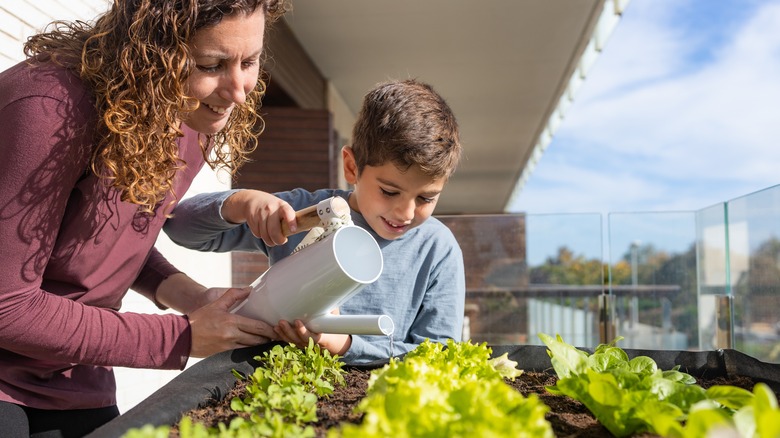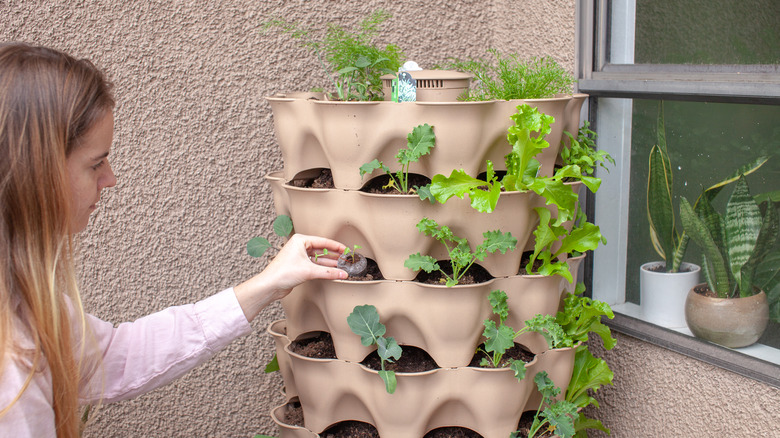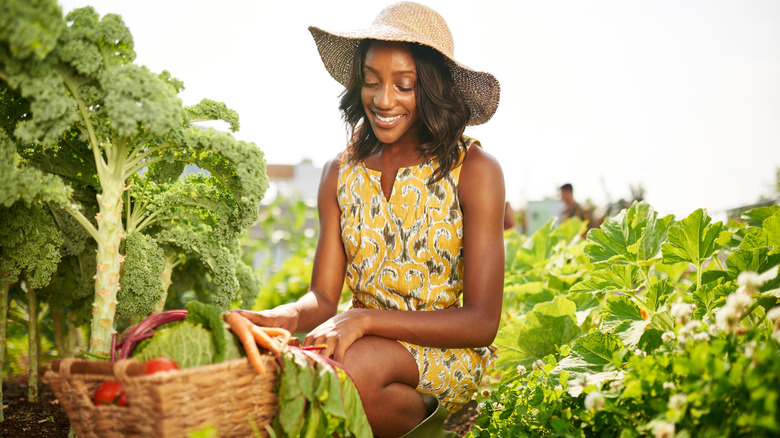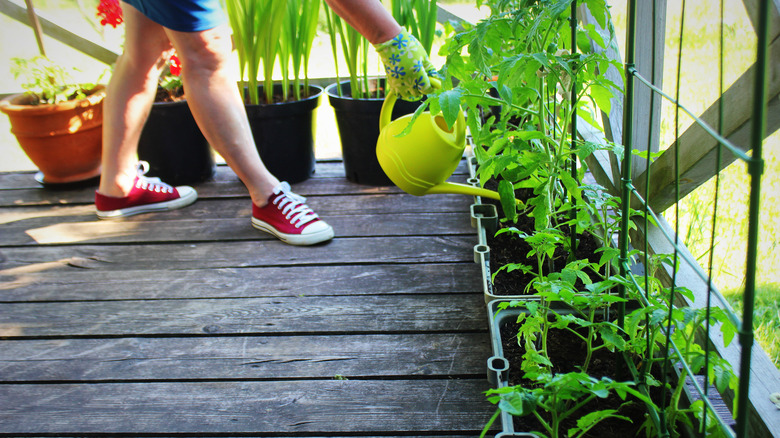How To Create Your Own Patio Vegetable Garden
We may receive a commission on purchases made from links.
If you live in a condo or a high-rise apartment, you might feel like your gardening options are few and far between. However, that's where vegetable microgardening comes in. You get all the relaxation and mediation of that comes with gardening, and when it's all done, you get to plate the results and have a homegrown feast.
Gardening vegetables has become such a popular pastime that sites like Rise Gardens will sell you a complete kit that will transform you overnight into an urban farmer. Not only are you putting actual food on your table; you know precisely what goes into what you're plating because every ingredient your plant consumes is something you put there yourself. Not only that, but if you have a family, this is one experience that's easy to share while passing along the knowledge you've acquired right from the comfort of your own balcony, patio, or railing.
How to start a patio vegetable garden
How DIY are you? There are places, like Amazon and My Gardyn that will sell you a pre-assembled home garden with a small trellis — on wheels no less — for anywhere from $75 to $700. It's urban gardening made so easy that a youngster could learn to garden with it, with the My Gardyn option providing you an app to guide you as you grow your plants. But, if you're a gardener who believes that at least some of the pleasure of growing a garden is in the meditative process of doing the work yourself, that means assessing the space you have to devote to gardening as well as the time and money you want to invest.
No matter how organic you're hoping to grow, the experts at Gardening Know How recommend that you use synthetic soils when you're not gardening on an actual plot of ground. That means you'll be creating a kind of parfait: a container that has some gravel or small rocks in it for drainage, followed by perlite, vermiculite and peat moss, and wood chips or sawdust. They also caution that when plants are out of sight on a balcony or patio, they can be out of mind, too. Don't forget to water them as recommended. Some gardeners keep a clipboard inside next to the door with the names of the plants, their watering schedule, and a place to check them off as each job is accomplished.
What to grow on a patio garden
The most essential ingredients in successful microgardening are space and light. Most patios and balconies don't receive direct sunlight throughout the day, so you'll want to observe how long the sun is actually shining where you garden. And be aware of how these changes occur as the seasons come and go, too. You'll have one experience of sun if you're in San Antonio, and one that's completely different in Seattle where in the summer, the sun rises before 5 a.m. and sets around 9:30 p.m. for about three months. In the winter, the sun rises closer to 7:30 and wanes around 3 p.m.
Vegetables require between six and eight hours of direct sun to flourish. You'll find cucumbers, strawberries, squash, and tomatoes on that list, and all of them will need at least six hours of sun to grow and ripen. According to the gardeners at Naturez Edge, anything less is considered partial sun, and under those conditions, you can still grow beets, carrots, cauliflower, chard, onions, and peas.
But you're not out of luck with even less light than that. Partial shade can produce radishes, and full shade will still be enough to raise bok choy, salad greens, and other leafy items as well as mint, garlic, green onions, cilantro, and lemon balm. It's worth noting too that you can give mother nature a helping hand by obtaining an LED grow light that will augment diminished sun with full spectrum light.
Tips for patio and balcony gardening
You can get ideas of what your adult plants are going to look like from both the packaging and the internet, but it's important not to overplant, because you don't want too many large vegetables crowding out smaller ones. A number of seed brands will offer advice about whether the plant you've selected is a good option for container planting. Balcony Garden Web has advice about what grows best where, and a wide assortment of possibilities for planting.
Since the space you have is limited, also make sure that the weight of your garden is well distributed. One of the best ways to do this is to not only use the floor around you, but ceiling and wall space as well. Hanging pots are sometimes better than their floor-based counterparts and a well-placed lattice or trellis can yield a tidy little crop of cucumbers, pole beans, or peas. Some plants, like tomatoes, have been engineered to grow in miniature, so they too might be a smarter investment.
Keep your neighbors above, below, and on either side in mind as well. You wouldn't want to put up a trellis between your neighbors and their patio view of downtown, for example. There are self-watering containers, too. You wouldn't want your watering to trickle down onto the neighbors' balcony below, and an inexpensive way to guard against that is to have pans (disposable aluminum will do) underneath your plants to catch the water your plants don't use.



